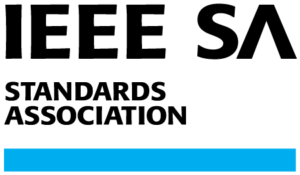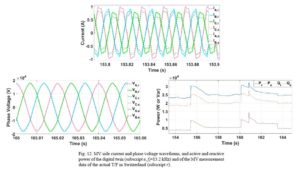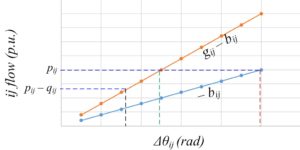Last updated October 2021 (originally published March 2020)

Update: The IEEE Open Access Journal of Power and Energy is now indexed on Scopus! This is great news for an Open Access effort in the field of Power and Energy research that has started no more than 2 years ago! Many congratulations to the Editor-in-Chief Prof. Fran Li for his role in ensuring the highest quality of publications and to everyone who has worked to bring IEEE OAJPE to this first milestone of prominence. I am very proud to work by their side from the very first few days of this Open Access journal!
~ * ~
As of Jan. 2020 I have joined the Associate Editors’ roster of the IEEE Open Access Journal of Power and Energy and am, thus, kindly inviting colleagues & peers in the community of Power System R&D to submit their recent works. Given this opportunity, I would like to express some thoughts about Open Access (OA), the current status in the respective publications field, and how the IEEE is fundamentally different by contributing positively to OA…
On Open Access…
OA is seen by many as the silver bullet in the era of the misinformed public and the need for wider access to knowledge worldwide. Before OA became common practice, a Reader or an Institution would subscribe or pay one-time-fees to access papers or journals. In the most typical OA model instead, the Author of an accepted paper pays to allow everyone and forever to read her/his work (provided they have internet connection). In most cases, the OA paper fees are then charged to a grant for R&D or some other discretionary account. There are many initiatives and organizations (here and here) that have been spearheading and representing the benefits of OA and how to best employ and take advantage of them.
Much criticism is floating around about OA; indicatively, read here, here and here. The major arguments against OA are directed at the numerous (frequently predatory) publishers that have popped up in the last 10-15 years. These publishers have the sole purpose of publishing OA journals; let us, following, call these latter publishers as predators. How did this criticism gain steam? Academic publishers are for-profit organizations; traditional publishers’ revenues come mostly from subscriptions and a few authors’ OA fees, while predators’ revenues come exclusively from authors’ OA fees. These revenues are then used to enhance the quality and expand/update the range of their scientific publications. To do so, publishers need to be catching up regularly with the latest advances in every field. How is that done? By publishers joining or sponsoring conferences (see proceedings) and maintaining strong and long-standing relationships with scholars, experts, universities and the industry. The critics believe that the predators do not have the capacity or have not shown actual interest in advancing their publications. Which comes in contrast to the traditional publishers such as the the IEEE, Elsevier, Springer, etc…
I will attempt a deeper dive on the topic with some observations I made in the past few years, solely on my field of Electric Power Systems and the very relevant areas. I will not use references and specific names, because some predators targeted and harassed their critics, despite the criticism being constructive and well-documented. A side note here: when criticism is unfair or unfounded, you do not harass the critic or the institution; you sue and demand truth and fairness be restored. In the cases that have made me skeptical of naming predators and point to their practices, the legal path was not how they chose to act; hence, feel free to draw some first conclusions at this point…
On to the deeper dive… In the field of Power Systems R&D, the acceptance rates in journals, which have historically disseminated all impactful works that shaped the sector, are not greater than 20% by average (easy to search these statistics). It is shocking to discover that in OA journals of predators the same rates are by minimum 40%! Even assuming that no special kind of leniency or absence of peer review is practiced (not the average case – see here), it is clear that predators are systemizing their ‘money-making’ processes to the absolute maximum. Another point of concern here is that some of the most ‘successful’ predators, do not make their revenues easily available/public… Nevertheless, one might argue here that a financially-healthy publisher is a good publisher, hence, in the long-term and based on its revenues, will expand the journals range according to new topics, trends and so on. But is that plausible for predators?
As mentioned earlier, to achieve the last point, a publisher needs strong relationships with renown authorities in the field and persistent presence in scientific meetings and industry panels. In many of the OA journals of predators in our field, there are hundreds of editors and dozens of special issues. One can only wonder how a predator can actually navigate the landscape for such an effort! Moreover, most of the traditional publishing powerhouses, have had also other types of collaborations with the experts and scholars in the field, such as books, sponsored workshops, conferences and forums, development of standards, etc. Predators have scarce or no presence at all in such activities, despite being around for over 10 years. Hence, the question naturally occurs: what is the value added by the extremely efficient (put nicely) business model of the predators which publish solely OA, have zero to limited interactions with the field they publish for, are seemingly driven only by a high-numbers-short-times agenda, and do not aim to advance the relevant R&D?
No one, of course, can claim that predators are indifferent to science. Many world renown scholars have joined the ranks of some predators and avidly express their hopes and aspirations that these publishers will shape decisively the landscape of OA thanks to their efficiency and their single-purpose agenda. In other words, the glass is definitely half-full and half-empty… Regardless of the perspective on the matter though, the aforementioned concerns stemming from the practices of predators are real, founded and have cast a shadow on OA. And this is where I believe the difference between the way OA is employed by predators and traditional publishers shows clearly. A difference even more glaring when the publisher is the IEEE!
I joined the IEEE Open Access Journal of Power and Energy as an Associate Editor, because I believe that the IEEE is aligning with OA in the same sense as it has been a lighthouse of scientific and professional development of Electrical, Electronics and Computer Engineers and Engineering since its inception. Because I believe that, if the model for peer-reviewed publications is about to change, it should be done by the institutions and the experts that have been spearheading and representing the R&D in the field that brought us to where we are today. Because I believe that transparency of operations and proven support of the scholars and professionals are a sufficient indication of focus and dedication to science and its applications rather than an aim for profits that might well weaken the long-term goal of science which is the betterment of society. In other words, I fail to see how any institution other than the IEEE can best employ and promote Open Access, and I am delighted to be part of this effort!





